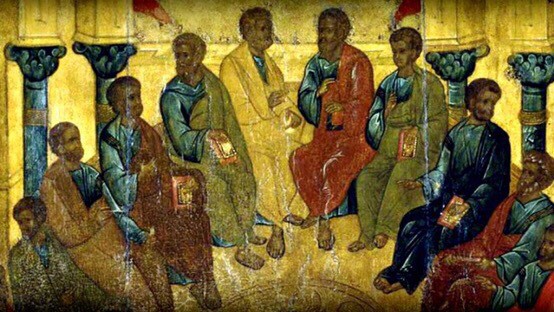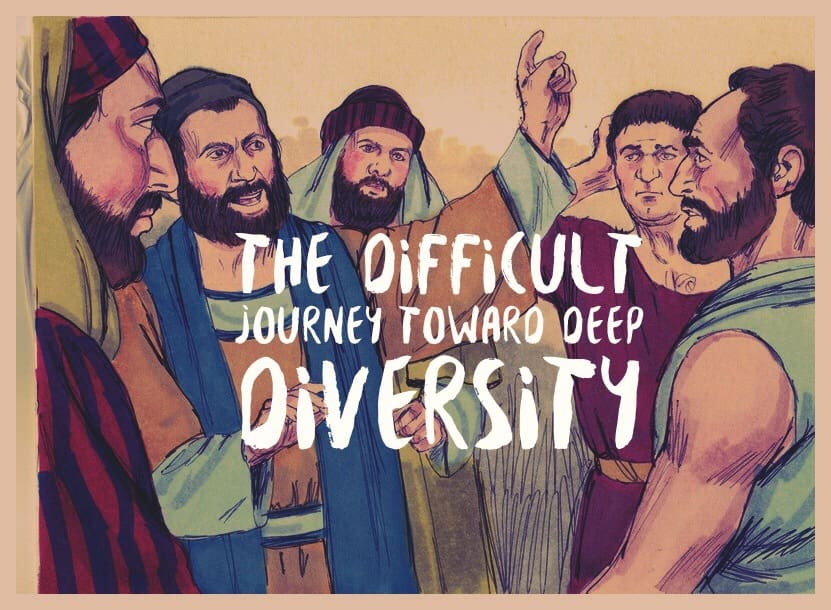“It is appalling,” Martin Luther King, Jr., once pointed out, “that the most segregated hour of Christian America is eleven o’clock on Sunday morning.” One of the primary reasons that churches remain segregated today is because white Christians failed to acknowledge the full humanity of their African-American sisters and brothers many years ago. For many African Americans, segregated churches functioned as a shelter from the systemic hypocrisy of church leaders who simultaneously claimed all people were created in God’s image and yet asserted supremacy over African Americans. The result is a lack of diversity that still persists in churches today.
The Midtown congregation of Sojourn Community Church—where I am blessed to serve as one of the pastors—is embedded in diverse neighborhoods. Yet the demographics of our congregation do not match the demographics of our neighborhood.
Not yet, anyway.
But we are growing in that direction and I believe that, by God’s grace, one day a beautifully multi-hued multitude of people will fill this place each week.
About three years ago, Sojourn Community Church set out on an intentional journey toward deeper diversity. The church is still far from its destination, but progress is being made. The demographics of the congregation are changing, and—far more importantly—hearts are changing. We are listening to voices that once would have remained unheeded and unheard.
For me, one of the most encouraging biblical books on this journey has been the book of Acts. In Acts, we see clearly that Christians in the first century struggled with many of these same issues. For them—no less than for us—the best solutions weren’t always clear, and the church’s first lurching movements toward those solutions were messy and sometimes misguided, just like ours have been.
The Call to Deep Diversity
Circumcision.
I know, it’s not typically a popular topic for public discussion.
Yet it’s a topic that shows up throughout the Scriptures.
 For the Jewish people, this act meant far more than a mere removal of a bit of flesh from the penis of a baby boy. Circumcision marked Jewish men and male converts to Judaism as participants in God’s covenants with Abraham and Israel.
For the Jewish people, this act meant far more than a mere removal of a bit of flesh from the penis of a baby boy. Circumcision marked Jewish men and male converts to Judaism as participants in God’s covenants with Abraham and Israel.
Once we understand that fact, it’s easier to see why some early Jewish believers in Jesus Christ assumed that, before an uncircumcised male could participate in the new covenant, he needed to commit himself to keep all the regulations in the old covenant—including circumcision.
But what these teachers were demanding was the submission of a marginalized minority culture in the church to the majority culture.
What early Christians decided on this issue would determine whether their churches would be outposts of deep diversity or if they would be enclaves in which everyone was expected to conform to a system of human standards. What the church—guided by the Holy Spirit—decided was to pursue deep diversity, regardless of the cost. In this sermon, I invite you to join me in an exploration of the difficulties and the possibilities that accompany the pursuit of deep diversity as the people of God.
Audio PlayerWhat Did and Didn’t Make the Cut
This is a complex text! I translated this text from Greek to English and read hundreds of pages about Acts 15 in academic journals, commentaries, Greek language resources, the works of the church fathers, and other preachers’ sermons before writing the sermon. In this particular message, I had to make some difficult exegetical decisions when it came to the precise implications of several words and phrases. In some instances, time permitted the presentation and explanation of only one interpretation even though I was aware of far wider range of possibilities. Here are three key instances when that happened in this sermon:
- What Was the Meaning of “Circumcision”? When it comes to the meaning of circumcision, I emphasized what seems to me to be clearest in Scripture—circumcision was a symbol of Israel’s separation from pagan nations, such that a male was either symbolically “cut off” from the nations by being circumcision or literally “cut off” from the people of God if he remained uncircumcised (Genesis 17:14). For the sake of time, however, I cut one important point related to circumcision: In designating circumcision as the sign of the covenant, God used a rite that, at the time of the calling of Abraham and the constitution of Israel, was known among other nations to be a symbol of priesthood. Circumcision thus marked the Israelites as “a kingdom of priests” (Exodus 19:6). Believers in Jesus Christ become a priestly kingdom not through circumcision but through union with Christ (1 Peter 2:4-9). Some hold that circumcision was far more widely known and practiced in the Roman Empire than I implied in the sermon. This might have been the case in North Africa or Egypt; however, primary sources from the regions represented in this text—Asia Minor, Syria, Samaria, Judea—simply cannot sustain such a widespread practice of circumcision.
- What Was the Point of the Four Prohibitions that the Church Requipped Non-Jews to Follow? When it comes to the meaning of the four prohibitions that James proposed (Acts 15:20), there are no fewer than five different perspectives that well-respected scholars hold. A couple of these perspectives focused on the issue of calling non-Jewish believers not to offend Jewish believers, treating the prohibitions as a temporary concession to the consciences of Jewish believers. I found myself unconvinced, however, that these prohibitions were temporary limitations meant solely to soothe the consciences of Jewish believers. Certainly, that was one aspect of what the prohibitions accomplished, but I find nothing in the text to suggest (1) that was the primary point of the prohibitions or (2) that the prohibitions were temporary concessions. In the end, Ben Witherington’s reading of the text was the most convincing—though I did go beyond Witherington in understanding “sexual immorality” to include more than participation in pagan temple prostitution.
- What Were the Implications of “Sexual Immorality”? My reason for taking this broader perspective on the meaning of “sexual immorality” had to do with another segment that I trimmed from the sermon for the sake of time. I see strong parallels between guidelines for non-Jews in Acts 15 and the guidelines for sojourners among the Israelites found in the Septuagint text of Leviticus 17—18. The proscriptions of sexual immorality in Leviticus 17—18 for those living in Israel clearly included more than prohibitions of cult prostitution. As I read Acts 15 alongside Leviticus 17—18, a far more comprehensive sexual ethic seemed to be intended in Acts 15.

Discuss in the Comments:
Listen to this message that I shared at the Midtown congregation of Sojourn Community Church. As you listen to this message, think carefully and prayerfully about your own church. What should the call to deep diversity look like where you live? What could you do this week to move toward deep diversity in the place where God has called you to serve? What are the barriers to deep diversity in your context? To learn more about Sojourn’s journey toward racial reconciliation, listen to this podcast from Love Thy Neighborhood.


